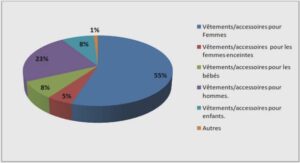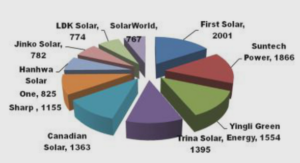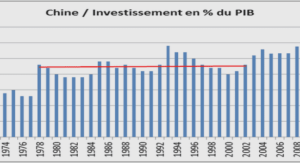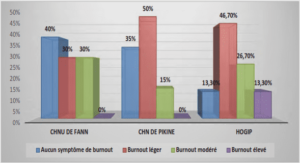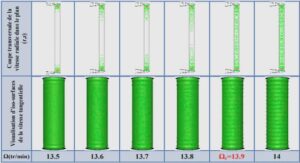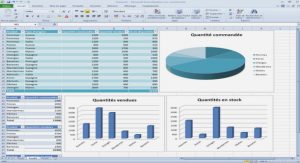Renouveau d’un système irrigué communautaire suite au déverrouillage de l’accès aux eaux souterraines profondes
How to integrate groundwater resources in a surface irrigation system
Integrating a new water resource in an existing surface irrigation system is not easy The elaboration of effective institutional arrangements to develop and schedule the conjunctive management of water resources requires considerable time and flexibility (Schlager, 2007). This is exactly where community-managed irrigation systems excel compared to state managed systems. In Nepal, Lam (1998) showed that irrigation communities are better at handling changes in the physical and social context, in developing rules to govern water distribution, and in the maintenance of the infrastructure. These comments are in agreement with those of Siderius et al. (2015), who based on an empirical study on traditional irrigation tanks in India, concluded that “decentralized systems with a potential for self-organization are considered to be very adaptable to change and to be less affected by sudden change or failure in parts of the system”. However, the aptitude of community-managed irrigation systems should not conceal the considerable difficulties that irrigation communities face when integrating alternative resources in their irrigation systems. First, the shaping of institutions and infrastructure in irrigation systems depends on the physical characteristics of the water resources (Cleaver, 2012). The challenge is all the greater when several water resources are used in the same irrigation system, e.g. surface and groundwater. These water resources may differ considerably in terms of discharge, and in the variability and reliability of flows, but also in terms of water quality (Iglesias and Garrote, 2015). It is consequently important to check if the water resource is characterized by flows and/or storage (Schlager et al., 1994). This changed considerably in Sidi Okba: first when the dam was built and second when exploitation of the confined aquifer began. The first change did not significantly affect the amount of water available to the oases, but did affect the flow (with an alternative high and low discharge resource). The second change increased the flow, because of the increased inter-annual storage buffer represented by the confined aquifer, which led to 71 an increase in the annual irrigation volume. In these circumstances, the challenge was to i) coordinate the use of 19 tube-wells with a low discharge per tube-well but that were at least in theory exploited almost continuously, and installed at different locations around the palm grove, and ii) ensure the distribution of groundwater at the same time as that of the surface water, when available. The results showed that the changes in institutions and infrastructure were incremental and took place over a long period. The irrigation community took advantage of the accumulated 28 years (from 1951 to 1979) of experience managing the low but continuous discharge of the unintended dam leakages. Leakage of water from the dam has been criticized in several technical and scientific papers (e.g. Toumi and Remini, 2004). However, the knowledge gained from managing dam leakages played a crucial role in the integration of groundwater, as the community had developed solid irrigation institutions to manage lowdischarge leakage water under an on-demand system, which had to serve a large number of users. The institutional arrangements crafted in 1989 to manage groundwater were largely inspired by the arrangements made for the distribution of dam leakage. Moreover, some garden owners had acquired experience in managing collective groundwater use in small groups (tubewell associations) between 1979 and 1989, making them comfortable with, for instance, the distribution of water to tube-wells and maintenance. However, the progressive installation of 19 tube-wells throughout the palm grove between 1979 and 2015, prompted the irrigation community to draw up new institutional arrangements to manage the cohabitation of several water resources and to coordinate the conjunctive use of dam releases and groundwater, dam leakages and groundwater and groundwater pumped from 19 tube-wells. In addition, they adapted the existing infrastructure by connecting secondary canals to cater for on-demand distribution of groundwater. Second, the state intervention based on a simplistic vision of a single water source is comparable to other interventions by authoritarian states with the intention to centralize everything and keep control of local society (Kouzmine, 2012). However, like in many other community-managed irrigation systems, throughout its history, the Sidi Okba irrigation community had also learned to negotiate with the state. Despite the formal nationalization of the irrigation system with the construction of the dam in 1950, the community never entirely abandoned its management. It succeeded in persuading the state at different times to cede the management of new secondary water-supply resources to the community, which the state considered was capable of collectively drawing up new rules that were more suited to the physical and social context. The irrigation community thus managed to develop conjunctive management of dam releases and dam leakages. The irrigation community’s ability to adapt to change was a trump card in negotiations with the state in 1989 to obtain control over the distribution of all water resources, including dam releases and groundwater. These negotiations resulted in the creation of a hybrid structure, an agricultural cooperative, in which both the state and the irrigation community were represented. This is in agreement with the analysis of Cleaver (2012), who emphasized that “institutions relating to community-based natural resource management” are often both formal/informal, where “collective action and common understandings were forged through everyday relationship and practices as well as through rules and authoritative roles”.
Planned conjunctive use does not necessarily ensure the sustainability of irrigation systems
There has been an interesting debate over the conjunctive use of surface water and groundwater as an alternative for optimal use of available water resources in semi-arid regions (e.g. Evans, 2010; Fisher et al., 1995). Several potential advantages have been identified: i) effective response to the scarcity of surface water (Dongyuan et al., 2010); ii) adaptation to climate variability (Li et al., 2016), related to the fact that groundwater can play the role of a buffer in difficult climatic years when little or no surface water is available (Pavelic et al., 2012); iii) ‘losses’ from surface water irrigation recharge phreatic aquifers, which in turn can be used by farmers, thus increasing irrigation efficiency (Foster and Chilton, 2003) or overall water use efficiency, iv) in the case of different water salinities, the smart mixing of different waters can mitigate the negative effect of saline water on crop production (Naresh et al., 1993) and v) conjunctive use provides flexibility, especially since the groundwater resource is ‘on tap’ and can thus increase water productivity (Pulido-Velazquez et al., 2006). However, in many surface irrigation systems, groundwater use has resulted in degradation of water quality, aquifer depletion and concomitant inequalities, for instance when the shallow low-cost irrigation wells ran dry (Foster and Van Steenbergen, 2011). This is partly related to the fact that conjunctive use is “essentially spontaneous (unplanned, unregulated and unmanaged” (ibid.) or, in our case, ignored during state interventions. The case study showed how the irrigation community, in combination with the state, progressively developed new rules and adapted the irrigation infrastructure to plan, regulate and manage the conjunctive use of multiple water resources. Some of these resources appeared unplanned, such as the dam leakage or the individual tubewells that were operated through water service markets to serve large numbers of water users, while others were planned (e.g. the state tube-wells). Even in the latter case, the management of this water resource, in conjunction with the other resources, was reinvented by the irrigation community. However, even planned, regulated and managed conjunctive use does not necessarily include the sustainability of the irrigation system as an explicit objective. The table below summarizes the consequences of the conjunctive use of different water resources in the three periods of the Sidi Okba irrigation system for the groundwater resource In Sidi Okba, the state ambition to develop a modern and simple irrigation system that depended on a single water resource – first on dam water releases in 1950 and then on groundwater since 1979 – had environmental consequences (table 3). These consequences include the decline in the water tables of the phreatic and confined aquifers, the degradation of the water quality of the phreatic aquifer, and the appearance of soil salinity downstream of the palm grove. The complementarity of surface water and groundwater of the recharged phreatic aquifer was first ignored when the waters of Wadi El Abiod were harnessed by the construction of the Foum El Gherza dam and the cementing of part of the main irrigation canal that delivered the dam releases. The state had not considered the irrigation system as a conjunctive use system, thereby disturbing its functioning in the medium term (table 3). The second disruptive factor was the emergence of private exploitation of groundwater after 1950, leading to more water being abstracted from the phreatic aquifer than its natural recharge, and resulting in a gradual drop in the phreatic water table. The third disruptive factor was the introduction of, and the dependence on, deep groundwater in the confined aquifer (table 3). Those who used groundwater in Sidi Okba were aware of the harmful consequences of the use of deep groundwater for the phreatic aquifer, and changed certain irrigation practices to reduce the percolation of water, and adapted their tube-wells to avoid taking saline water from the phreatic aquifer. However, there was no response at the level of the irrigation system to face the longer-term undesirable effects of intensive resource use (Llamas and Custodio, 2003). Therefore, the sustainability of the system is called into question in a context where the state is primarily concerned with short-term agricultural and economic development, and where the irrigation 74 community has to cope with a successive series of water crises and looks for alternative water resources. Within the larger framework of ambitious policies to promote agriculture in the Sahara, the state unlocked the access to deep groundwater of the confined aquifer in Sidi Okba to first alleviate the water shortage due to droughts and second to promote agricultural development (Hamamouche et al., 2015). Thus, groundwater, which was previously a secondary source of water except for the traditional irrigation systems of foggaras, spring and artesian wells, became at the end of the 20th century, the main water resource used for the development of irrigation in Algeria – 88% of the irrigated area – through hundreds of thousands of wells and tube-wells (Kuper et al., 2016). In the Algerian Sahara, the little-renewable groundwater resource was also integrated in most community irrigation systems to compensate for the deficit of the main water resources traditionally used (Bisson, 1992; MRE, 2009). However, there is no socio-technical study on the conjunctive water use to compare our case study with other traditional oasis irrigation systems. This shows the need to extend such studies on other community irrigation systems to reflect on conjunctive management solutions. This is all the more relevant as these systems are confronted with environmental vulnerabilities, caused by the intensive exploitation of little-renewable groundwater resources both inside and outside the ancient palm groves. The vulnerabilities caused by the intensive exploitation of groundwater must, therefore, be addressed at a larger scale, at the level of the irrigation system, or even that of groundwater basins, and involve both the state and the irrigation communities (Schlager, 2007). We argue that a first step towards solving this problem is recognizing the complexity and conjunctive use of many irrigation systems (multiple water resources / multiple demands), taking into consideration the hydrological cycle, the hydraulic connectivity between surface water and groundwater, and the larger ecosystem and livelihoods in the medium and long term. In parallel with agricultural development in the Sahara, the question of the long-term sustainability of irrigated agriculture and the water resources on which it is based needs to be addressed.
Conclusion: building on the legacy of the capacities of local irrigation communities
The history of the community managed Sidi Okba irrigation system has been eventful, especially following state interventions, first with the construction of the dam in 1950 and second, by unlocking access to little-renewable groundwater in 1979. In the second half of the 20th century, the state view of a system based on a single source of irrigation water gradually had harmful consequences for the water resources. This was also the case of many other irrigation schemes in semi-arid and arid regions, for example in the Mediterranean region (Leduc et al., 2017). Ways to improve the sustainability of irrigated agriculture and of its water resources may be found in community practices and knowledge (Cleaver, 2012), as “traditional knowledge is a dynamic system able to incorporate innovation subjected to the test of the long term and thus achieves local and environmental sustainability” (Laureano, 2007). However, rather than going back to traditional irrigation practices that may no longer be appropriate in the current situation, we argue that it is possible to build on the legacy of innovation, adaptation and negotiation capacities of irrigation communities to reorient the irrigation system towards more sustainable pathways. The Sidi Okba irrigation community has demonstrated its adaptive capacity to integrate new water resources in its surface irrigation system and to change irrigation 75 practices. However, the boundaries of the irrigation system have changed with the incorporation of groundwater pumped from confined aquifers, which means that the water resources cannot only be managed locally. Here, the long-standing capacity of the irrigation community to negotiate with the state may be useful to link local and more regional water-related issues in the design of more sustainable development of irrigation. For example, by reducing the irrigation volume or integrating new non-conventional water resources such as recycled wastewater to attenuate the pressure on little-renewable groundwater resources. During the course of its hydraulic history, the community has learned from its ability to integrate and manage conjunctive use of multiple water resources in its irrigation system. This ability to adapt to political, environmental, and other kinds of change, will be decisive in safeguarding the existing irrigation system and in ensuring the sustainability of natural resources in the hostile environment of the Sahara.
Chapitre 1. Introduction générale |
